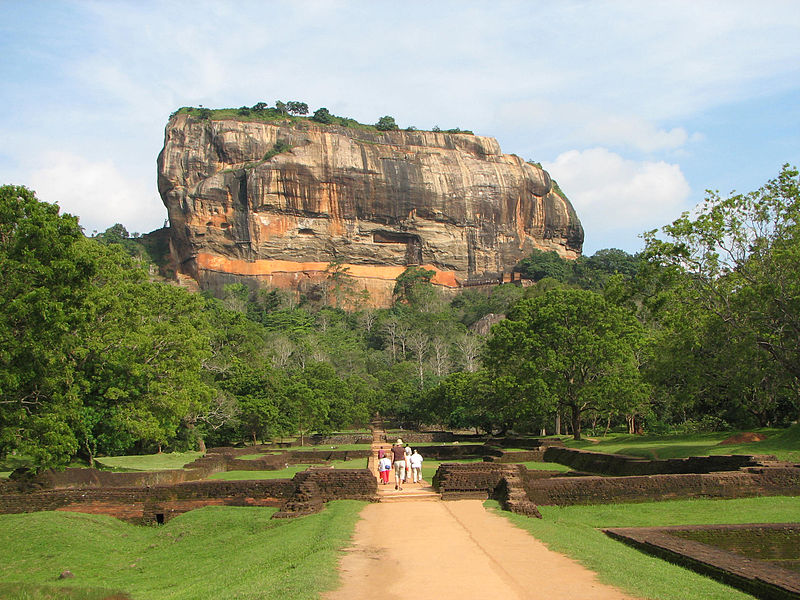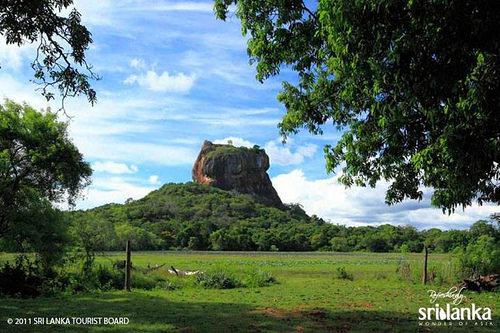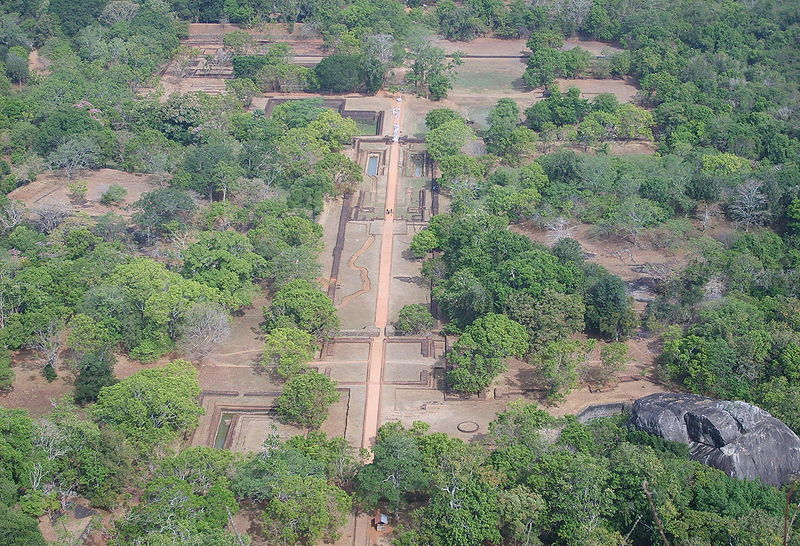The Eighth Wonder of the World: Sigiriya “The Lion Rock”
The Sigiriya Rock Fortress, or the palace in the sky, is a masterpiece of ancient Sri Lankan ingenuity. The monolithic rock of Sigiriya is one of the most valuable historical monuments of Sri Lanka and the locals refer to it as the Eighth Wonder of the World.

This ancient rock fortress is located in the central Matale District between the towns of Dambulla and Habarane in the Central Province of Sri Lanka. Sigiriya, also known as the “Lion Rock”, is 200 meters (660 ft) higher than the surrounding jungles and a popular tourist attraction of the spectacular beauty in Sri Lanka.

As one of the eight World Heritage Sites of Sri Lanka, it has also been declared by UNESCO as the Eighth Wonder of the World.
This ancient rock fortress and palace ruin is surrounded by the remains of an extensive network of gardens and reservoirs. The gardens of Sigiriya are among the oldest landscaped gardens in the world.

The name “Lion Rock” comes from the enormous lion which greets visitors halfway up the rock on a small plateau. In 476 CE, King Dhatusena ruled over Sri Lanka and next in line was his son Moggallana, but Moggallana’s brother named Kashyapa, had other plans.

Kashyapa schemed with the commander of the army to overthrow King Dhatusena. He usurped the throne from his father by force and imprisoned him to die slowly and painfully. Kashyapa drove his brother Moggallana into exile in Southern India and he crowned himself king in 477 CE.

King Kashyapa was afraid of losing the throne so he relocated the royal seat to Sigiriya from the capital of Anuradhapura. He chose Sigiriya because of its strategic position that offered fantastic 360-degree views.
King Kashyapa built his palace on the top of the rock and decorated its sides with colourful frescoes.
The entire complex featured five gates and was nearly two miles wide (3 km) and over a half-mile long (1 km). Frescoes covered the western wall of Sigiriya but only eighteen frescoes have survived to this day. The frescoes are depicting nude females but their identity remains unknown.

One theory says that the females are Kasyapa’s wives, while another one that they are women who participated in religious observances.
The mirror wall borders and protects the world-famous gallery. In the past, it was so thoroughly polished that the king could see his reflection in it.
The mirror wall is painted with inscriptions and poems written by the visitors of Sigiriya and some of those notes dates from the 8th century CE.

Moggallana, the rightful heir to King Dhatusena’s throne, later defeated Kashyapa in 495 CE. After the battle, King Moggallana moved the capital back to its historic place in Anuradhapura.
After Kasyapa died, Sigiriya was as a Buddhist monastery until the 14th century.





